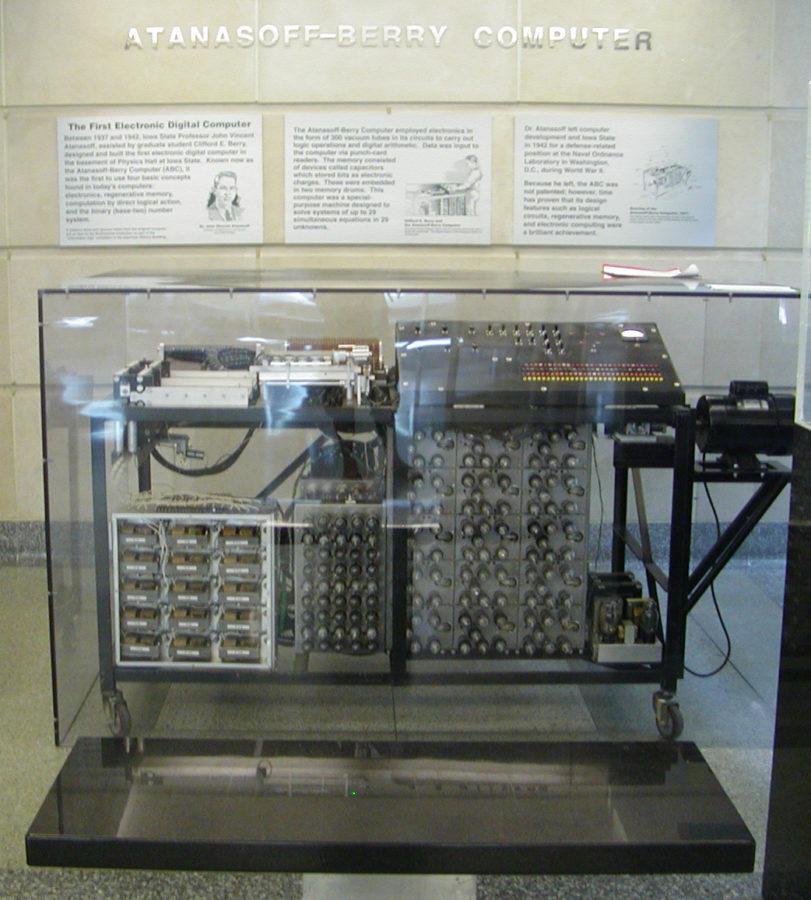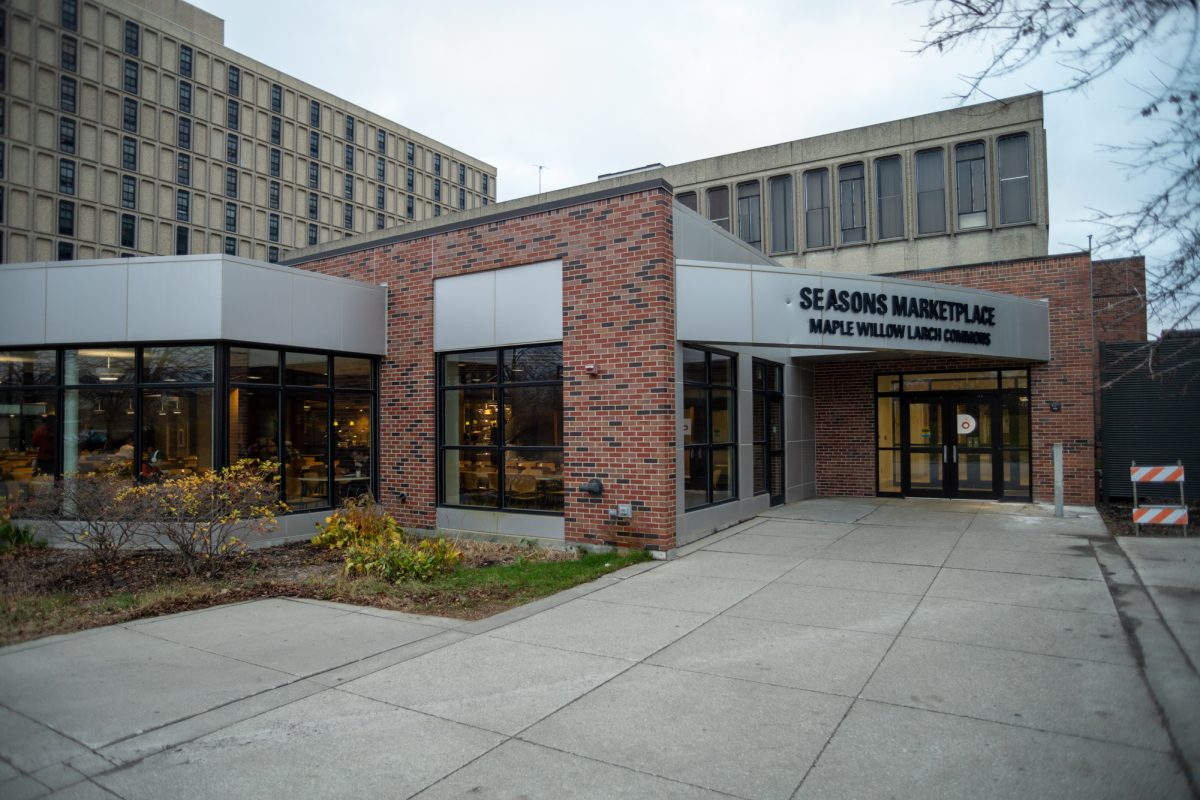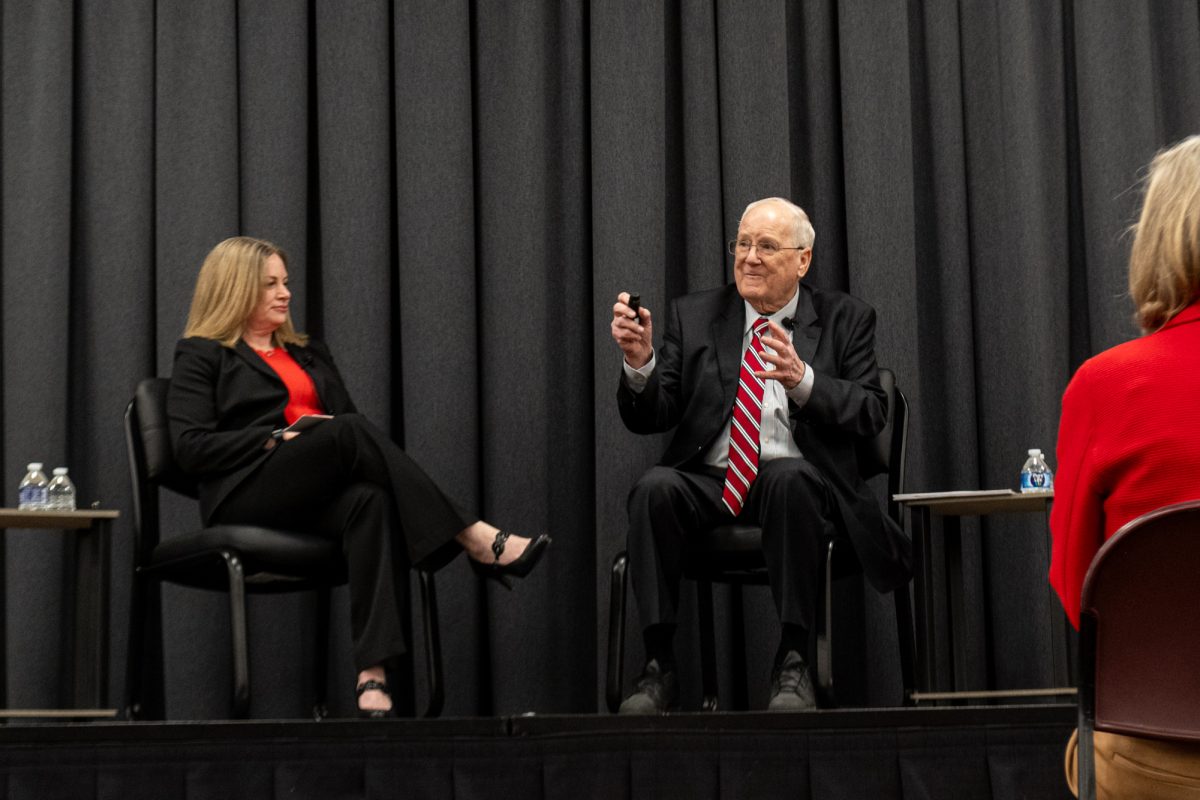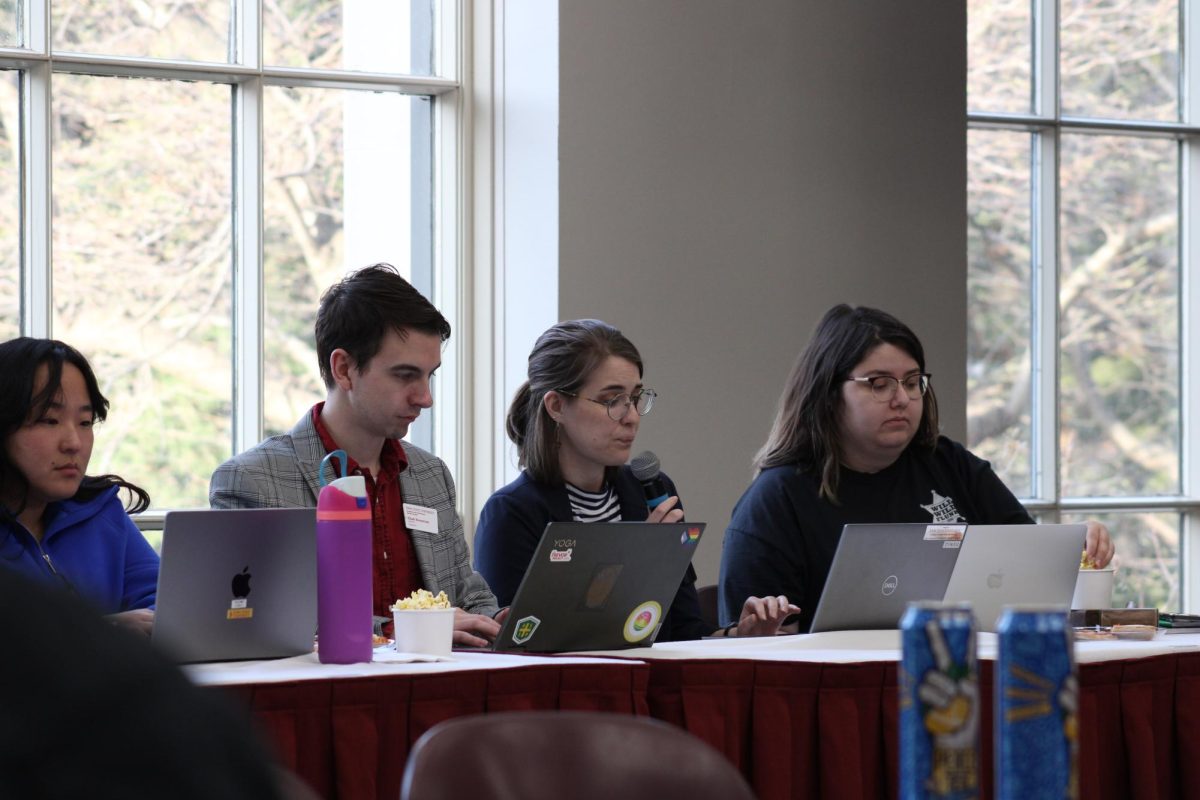How Iowa State built the first digital computer and what it means today
The replica of the Atanasoff-Berry Computer was built in 1997.
February 6, 2019
A source of pride for many Iowa State students, faculty and staff is the fact that the first digital computer was created at Iowa State.
But how did it happen here?
The Atanasoff Berry Computer (ABC) was created between 1939 and 1942 by John Vincent Atanasoff along with a graduate student, Clifford Berry.
Atanasoff was a professor of Mathematics and Physics at what was then called Iowa State College. He sought a quicker and more accurate way to do the complex calculations that his work required, according to the Iowa State Department of Computer Science.
Atanasoff’s budget to build the machine was $5,330, according to a copy of the original document submitted to the university by Atanasoff. That amount adjusted for inflation would equal about $96,000 in today’s dollars.
In 1939 the pair received the funding to begin work on the machine, meaning 2019 marks 80 years since the machine first started being built.
It had no mouse, screen or keyboard and is almost unrecognizable as a computer by today’s standards.
According to the Department of Electrical and Computer Engineering, the computer is “the size of a big desk, weighs 750 pounds and features rotating drums for memory, glowing vacuum tubes and a read/write system that recorded numbers by scorching marks on cards.”
The department also notes that the computer was the first to use several innovations still used today. This includes binary, the base-2 number system used in virtually every digital device in the world.
The ABC also was the first to use a modular design, which means that some parts could be removed and replaced without needing to completely rebuild the machine.
The ABC’s history is not without controversy, however.
Atanasoff and Berry never patented the ABC.
World War II interrupted their work and they had to move on to other tasks. J. Presper Eckert and John Mauchly of the University of Pennsylvania created in the mid 1940’s a machine called the ENIAC which was very similar to the ABC.
The ENIAC was granted a patent in 1964. Nine years later, a U.S. District judge voided the patent, writing that “Eckert and Mauchly did not themselves first invent the automatic electronic digital computer, but instead derived that subject matter from one Dr. John Vincent Atanasoff.”
The result of the lawsuit was that Atanasoff is now legally recognized as the inventor of the first digital computer.
So where can you go to see the world’s first digital computer?
You won’t find it in the aptly named Atanasoff Hall, home of Iowa State’s computer science program.
You won’t find it within the university’s special collections, either.
The world’s first digital computer was dismantled and “scavenged for parts” in the late 1940s, according to Iowa State University’s Special Collections.
A replica of the ABC was built at Iowa State in 1997. However, the replica was sent to the Computer History Museum in California in 2010. Before then it was on display at the Durham Center.
According to the museum’s website, one of the reasons the original was dismantled is because “it was too big to fit through a standard door.” The replica was built slightly smaller to fix that problem.
According to Iowa State’s Department of Electrical and Computer Engineering, “It took a team of researchers, engineers, faculty members, retired faculty, and students from Iowa State and the U.S. Department of Energy’s Ames Laboratory four years and $350,000 to build the replica ABC.”
“To me, the ABC represents the cornerstone invention of modern computing,” wrote ISU applied math alum John Gustafson, a member of the team that built the ABC replica.
The replica will be in the museum until at least 2020, with the possibility of a 5-year extension on that agreement.
“John Vincent Atanasoff and Clifford Berry were true pioneers in electronic digital computing,” said then-university president Gregory Geoffroy when the arrangement to send the machine to the museum was first announced.






